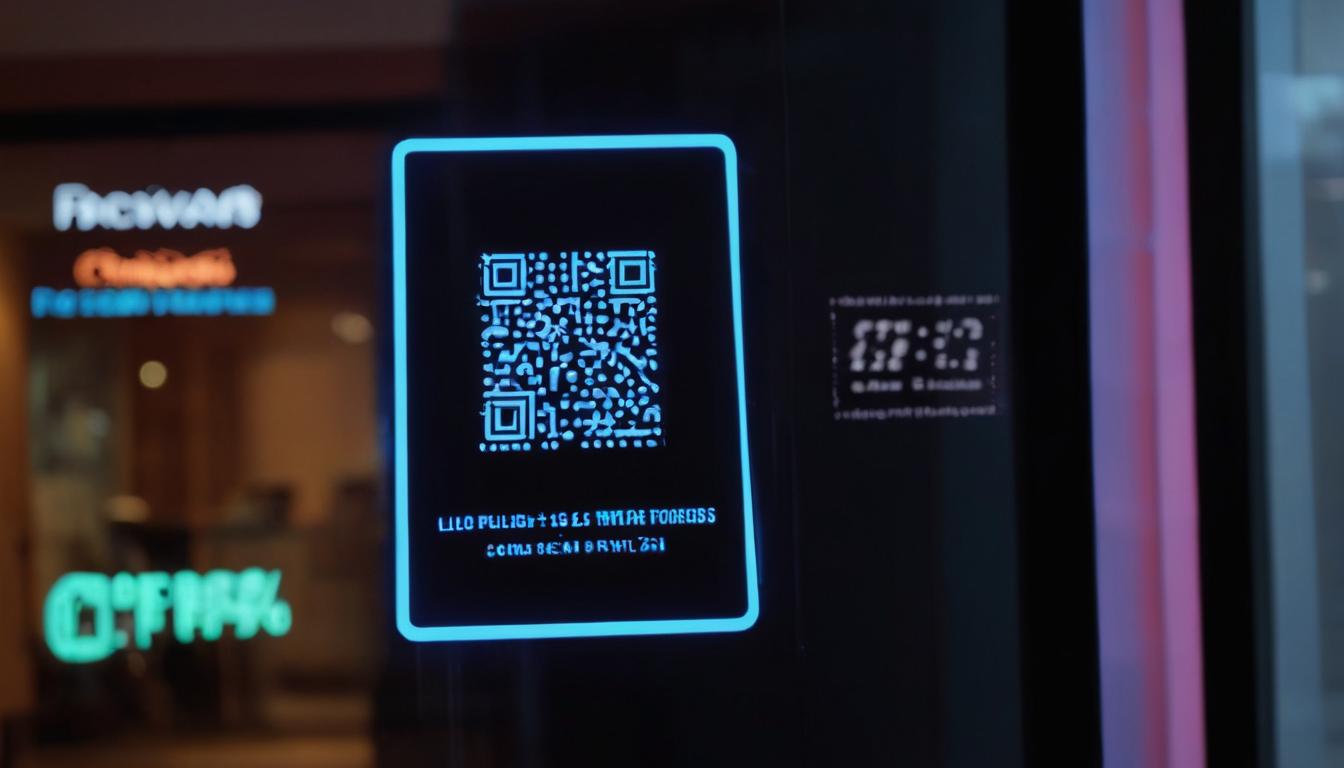Do Loyalty Programs Increase Sales? If Your Business Doesn't Have One Right Now, You May Want One By End of Business Today. Here's Why . . .
Imagine a tool that not only keeps your existing customers coming back but also transforms them into ambassadors of your brand. That's the power of a well-crafted loyalty program, kind of like the BNI motto - Giver's Gain. With the help of loyalty software, like the Lealtad App, businesses can create a personalized shopping experience that rewards customers for their purchases that customers love - and the data clearly shows it. This not only encourages repeat business but also attracts new customers through word-of-mouth.
Key Takeaways
- Boosting Customer Retention and Sales: Loyalty programs are proven to increase both the frequency of purchases and the average order value, directly enhancing sales and customer retention. By rewarding repeat customers, these programs provide a more predictable revenue stream and foster long-term business growth.
- Personalization and Customer Engagement: Tailoring rewards and experiences to individual preferences significantly boosts customer engagement and satisfaction. Programs that offer personalized experiences, like Amazon Prime and Sephora's loyalty programs, not only retain customers but also turn them into advocates for the brand.
- Strategic Use of Technology: Integrating digital tools into loyalty programs enhances the efficiency and appeal of these programs. Digital platforms facilitate better tracking of customer behavior, enable personalized communications, and streamline the redemption process, making them indispensable for modern businesses.
- Continuous Improvement and Adaptation: The most successful loyalty programs are those that continually adapt to changing customer needs and market conditions. Utilizing customer feedback and staying abreast of industry trends are crucial for maintaining the relevance and effectiveness of loyalty initiatives.
Loyalty program statistics reveal a clear trend: customers that are members of loyalty programs are more likely to make repeat purchases. This demonstrates a direct link between customer loyalty and increased sales. By focusing on the needs and preferences of your customers, you can use loyalty programs to boost not just sales, but also customer satisfaction.
Moreover, loyalty programs are not just about offering discounts or points for purchases; they're about building a relationship with your customers. Through exclusive offers and personalized rewards, you can consistently engage with customers, making them feel valued and appreciated. This emotional connection can be a significant driver of sales growth, proving that loyalty programs are an indispensable tool for businesses looking to thrive.
Understanding the Impact of Loyalty Programs on Business Growth

Loyalty programs are more than just a marketing strategy; they're a growth engine for businesses. By encouraging repeat customers, these programs not only boost sales but also provide a more predictable revenue stream. It's easy to understand why, too - people want to do business with a company that they have a great relationship, and that values them as a customer. The returns on investment from loyalty programs are substantial, as they not only increase the frequency of purchases but also elevate the average order value, leading to significant business growth.
Why Customer Loyalty is the Cornerstone of Sustainable Growth
The foundation of any successful business is its loyal customers. These customers are the ones who choose your brand over competitors consistently. Through loyalty programs, businesses have a powerful tool to retain customers, ensuring a steady revenue flow. This sustainable growth is crucial for long-term success, as acquiring new customers can cost up to five times more than retaining existing ones.
The Role of Customer Retention in Enhancing Revenue
Retaining your customers through effective loyalty programs is an efficient way to increase your revenue. When customers feel valued and rewarded for their loyalty (like good customer service but better), they are more likely to make repeat purchases and higher spend per purchase. Loyalty programs generate strengthened bonds with your customers while also lifting your revenue, as the probability of selling to an existing customer is significantly higher than to a new prospect.
How Proven Loyalty Programs Amplify Customer Lifetime Value
A well-implemented loyalty program can dramatically increase the lifetime value of your customers. By consistently rewarding purchases and engaging customers with personalized experiences, you encourage them to stay loyal to your brand for longer periods. This extended engagement results in increased spending over time, proving the direct impact of loyalty programs on customer lifetime value.
The Anatomy of Successful Loyalty Programs

At the heart of successful loyalty programs lies a deep understanding of customer needs and preferences. These programs are designed to offer value that goes beyond transactions, fostering a genuine relationship between the brand and its customers. The most effective programs are those that are easy to join and provide clear, attainable rewards, making the loyalty experience enjoyable and rewarding for customers.
Key Features of High-Performing Customer Loyalty Programs
The best loyalty programs stand out by offering personalized rewards, seamless user experiences, and meaningful engagement. They utilize loyalty software to track customer preferences and purchases, ensuring that the rewards are both desirable and relevant. This approach not only enhances customer satisfaction but also drives repeat business, creating a win-win situation for both businesses and their customers.
Personalized Experiences and Their Influence on Loyalty
Personalization is the key to unlocking customer loyalty. By leveraging customer data to tailor rewards and offers according to individual customer preferences, loyalty programs can significantly enhance customer engagement. Prime members, for example, receive personalized recommendations and exclusive offers that make them feel valued, encouraging them to continue their membership and make more purchases.
Tiered Loyalty Programs: Structuring Rewards for Maximum Engagement
Structuring your loyalty program with tiers can dramatically increase customer engagement. By offering different levels of rewards based on the customer's purchase history, you create a sense of achievement and exclusivity. This motivates customers to increase their purchases in order to reach higher tiers, boosting sales and enhancing customer loyalty.
The Strategic Use of Customer Data in Tailoring Loyalty Initiatives
Using customer data wisely is crucial in designing effective loyalty programs. By analyzing purchase patterns, preferences, and feedback, businesses can create highly targeted loyalty initiatives. This strategic use of data ensures that your loyalty program remains relevant and engaging for your customers, encouraging ongoing participation and purchases.
Enhancing Redemption Rates Through Targeted Offers
One of the key goals of any loyalty program is to maximize the average redemption rate. By using loyalty software to analyze customer behavior and preferences, businesses can create targeted offers that are more likely to be redeemed. This not only increases customer satisfaction but also encourages additional purchases, further boosting sales.
Utilizing Customer Feedback to Refine Loyalty Strategies
Listening to your loyal customers is essential for the continuous improvement of your loyalty program. Customer feedback can provide valuable insights into what works and what doesn't, allowing you to refine your strategies and offers. This iterative process ensures that your loyalty program remains effective and appealing to your customers, fostering a strong and enduring customer-brand relationship.
Real-World Examples of Transformative Loyalty Programs

The most successful loyalty programs are those that have managed to deeply integrate themselves into the customer's purchasing journey. By offering unique rewards, personalized experiences, and engaging interactions, these programs transform occasional shoppers into brand advocates and loyal customers.
1. Starbucks: A Proven Loyalty Program
Starbucks has set a high standard in rewarding customers and cultivating brand advocates. Their loyalty program rewards not just the purchases but also the engagement with the brand, encouraging customers to become vocal supporters. This approach has significantly contributed to Starbucks' ability to maintain a loyal customer base and drive sales. Starbucks reported that over half of its revenue came from its Starbucks Rewards members by the end of Q4 2023.
Gamification Elements in the Starbucks Loyalty Program
The Starbucks loyalty program incorporates gamification elements that make earning rewards fun and engaging. Challenges and milestones are set for customers to achieve, offering them tangible rewards upon completion. This gamification strategy not only enhances the customer experience but also incentivizes repeat visits and purchases, contributing to the program's overall success.
2. Sephora: Personalization at the Heart of Customer Loyalty
Sephora excels at making each of their loyal customers feel unique and valued. By tailoring recommendations and rewards to individual preferences, they've mastered the art of personalization. This strategy not only helps retain customers but also encourages them to engage more frequently with the brand. It's a brilliant display of understanding that loyalty is fostered through attention to detail and a personalized touch.
The Role of Exclusive Benefits in Sephora's Program
Exclusive benefits are a cornerstone of Sephora's loyalty program. By offering members access to limited-edition products, special events, and personalized beauty consultations, Sephora enhances the perceived value of being part of their community. These unique offerings incentivize customers to maintain their loyalty status and continue shopping, proving that exclusive benefits can significantly impact customer retention and satisfaction.
3. Amazon Prime: Setting the Standard for Subscription-Based Loyalty
Amazon Prime has redefined subscription-based loyalty by offering a comprehensive suite of benefits that extend well beyond free shipping. With access to streaming services, exclusive deals, and one-day delivery options, Prime members enjoy a level of convenience and value that is hard to match. This broad range of benefits ensures that customers remain engaged and loyal to the Amazon ecosystem.
How Amazon Leverages Cross-Selling and Upselling
Amazon's mastery in leveraging cross-selling and upselling techniques within its loyalty program is unparalleled. By analyzing purchasing decisions and browsing habits, Amazon can offer personalized recommendations that encourage customers to explore additional products they might like. This strategy not only enhances the shopping experience but also demonstrates how loyalty programs can increase sales by making each customer interaction more meaningful and tailored.
Integrating Technology and Innovation in Loyalty Programs

As a digital customer loyalty software, we recognize the transformative power of integrating technology and innovation into loyalty programs. By leveraging digital tools, businesses can enhance engagement, streamline processes, and provide a seamless experience for their customers. This integration is crucial for staying relevant in today's fast-paced market and for meeting the evolving expectations of tech-savvy consumers.
The Emergence of Digital Loyalty Solutions and Their Advantages
The rise of digital loyalty solutions has revolutionized the way businesses interact with their customers. And that's a good thing. No one wants to carry around extra stuff, like a paper punch card or worn out key tag. Plus, digital solutions are more eco-friendly (less paper and plastic waste) and offer much greater versatility while reducing expenses. These platforms enable companies to collect valuable data, automate rewards, and personalize communications, making it easier to build lasting relationships. The advantages are clear: improved efficiency, greater insights into customer behavior, and the ability to offer rewards that truly resonate with your audience.
The Impact of Mobile Apps on Customer Engagement and Retention
Mobile webapps have made increasing customer engagement and retention accessible to businesses of all shapes and sizes. By providing a convenient platform for users to track their rewards, redeem offers, and receive personalized notifications, apps encourage frequent interaction with your brand. This constant connectivity not only boosts loyalty but also fosters a sense of community among users, making them more likely to advocate for your brand.
The Effectiveness of Email Marketing in Nurturing Loyalty
Email marketing remains a highly effective tool in nurturing customer loyalty. Through targeted campaigns that offer exclusive deals and valuable content, businesses can keep their brand top-of-mind. This personalized approach helps reinforce the benefits of your loyalty program, encouraging repeat purchases and increasing sales over time.
Push Notifications and Location-Based Services as Engagement Tools
Utilizing push notifications and location-based services, such as offered by the Lealtad App, can significantly enhance customer engagement. These tools allow businesses to send timely and relevant messages directly to a customer's device, reminding them of exclusive offers or rewards available nearby. Such targeted communication not only drives foot traffic but also strengthens the relationship between your brand and its customers, leading to increased loyalty.
Measuring Success: Key Metrics for Loyalty Programs

Data consistently shows that loyalty programs can boost revenue for a business, and that customers are more inclined to spend their money with a business that offers loyalty rewards and benefits. To truly understand the impact of your loyalty program, it's essential to track key metrics such as purchase frequency and average order value. These indicators provide insights into customer behavior and program effectiveness. By analyzing these metrics, businesses can fine-tune their offerings to better meet customer needs, ultimately boosting revenue from customers and ensuring the long-term success of the program.
Understanding the Importance of Purchase Frequency and Average Order Value
Monitoring purchase frequency and average order value is crucial in assessing the health of your loyalty program. An increase in these metrics suggests that your loyalty program is effectively motivating customers to shop more often and spend more each time. This not only demonstrates the program's ability to drive sales but also highlights its role in strengthening customer loyalty.
Customer Churn Rate and Program Engagement: Indicators of Loyalty Program Health
Keeping an eye on customer churn rate and program engagement offers valuable insights into your loyalty program's performance. A low churn rate coupled with high engagement levels indicates a healthy program that keeps customers satisfied and loyal. By offering exclusive access and rewards, businesses can enhance these metrics, ensuring customers feel valued and connected to the brand.
Calculating the Return on Investment (ROI) of Your Loyalty Program
Calculating the ROI of your loyalty program involves comparing the incremental revenue generated to the costs incurred. This calculation helps businesses understand the financial impact of their program. Factors such as increased sales, membership growth, and the average basket size contribute to this analysis, providing a clear picture of the program's effectiveness and areas for improvement.
Navigating Challenges and Setting Realistic Expectations

When launching or revamping a loyalty program, it's important to navigate potential challenges and set realistic expectations. Understanding your audience, aligning rewards with customer desires, and continuously analyzing performance data are key steps in creating a successful program. By being proactive and adaptable, businesses can overcome obstacles and build a loyalty program that truly resonates with their customers.
Common Pitfalls in Loyalty Program Implementation and Strategies for Avoidance
Creating a loyalty program comes with its set of challenges, including ensuring program relevance and maintaining customer interest over time. To avoid common pitfalls, it's crucial to offer meaningful rewards, ensure the program is easy to understand and use, and regularly communicate with participants. By focusing on these areas, businesses can develop a loyalty program that effectively engages customers and drives long-term loyalty.
The Importance of Clear Communication and Realistic Reward Structures
For a loyalty program to truly resonate, clear communication is key. You need to ensure that your customers understand how they can earn points and what rewards they can expect. This means simplifying the redemption process so it's straightforward and hassle-free. Alongside, maintaining realistic reward structures plays a crucial role. It's about striking the perfect balance between offering value to your customers and ensuring the sustainability of your program. When done right, this fosters greater brand awareness, as satisfied customers are more likely to spread the word.
The Future of Loyalty Programs

As we look ahead, the future of loyalty programs is set to become even more personalized and integrated into the customer's everyday life. Advances in technology and data analytics will allow businesses to tailor offers and experiences like never before, moving beyond one-size-fits-all rewards to truly meaningful engagements. This evolution will not only enhance customer satisfaction but also open new avenues for brands to connect with their audience.
Predicting Trends: The Evolution of Customer Loyalty Programs
The evolution of customer loyalty programs is expected to focus on deeper, more personalized customer relationships. As potential customers continue to interact with brands in increasingly digital environments, loyalty programs will become more sophisticated, leveraging data to offer personalized experiences throughout the customer lifecycle management. This shift towards hyper-personalization will redefine how loyalty is built and maintained, making every customer feel uniquely valued.
The Growing Importance of Brand Values and Social Responsibility in Loyalty Programs
Today's consumers are not just interested in what you sell, but what you stand for. Loyalty programs are increasingly reflecting brand values and a commitment to social responsibility. This alignment helps build deeper connections with customers who prefer to support businesses that contribute positively to the world. As a result, loyalty programs that incorporate these elements are likely to see stronger engagement and loyalty, as they resonate more profoundly with the values of their customers.
Forging Ahead: Best Practices for Launching or Revamping Your Loyalty Program

Launching or revamping a loyalty program requires a strategic approach tailored to your industry and customer base. Understanding the unique needs and preferences of your audience is the first step towards creating a program that resonates. From there, incorporating feedback and learning from the successes and failures of market leaders can guide the continuous improvement of your program. This iterative process ensures your loyalty program remains relevant and engaging in a competitive market.
Tailoring Loyalty Programs to Industry and Customer Base Needs
Every industry and customer base has its unique characteristics and preferences. A successful loyalty program takes these into account, offering rewards and experiences that are genuinely valuable to its specific audience. Whether it’s through exclusive deals, personalized recommendations, or unique experiences, tailoring your program ensures it meets the expectations and desires of your customers, fostering loyalty and driving sales.
Continuous Improvement: Learning from Market Leaders and Innovators
In the fast-paced world of customer loyalty, standing still is not an option. Continuous improvement, driven by insights from market leaders and innovators, is essential. These insights can reveal emerging trends and customer preferences, guiding the evolution of your program. By staying adaptable and open to change, your loyalty program is expected to grow, keeping it fresh and engaging for your customers.
The Verdict: Do Loyalty Programs Truly Increase Sales?
Yes, loyalty programs have the potential to significantly increase sales. By fostering a deeper connection with loyalty program members, businesses can encourage repeat business and increase the lifetime value of each customer. These programs offer a way to reward customers for their loyalty, engage with them through personalized marketing strategies, and provide exclusive deals that incentivize further purchases. The result is not just an increase in sales but also an enhancement in customer satisfaction and brand loyalty.
Analyzing the Direct and Indirect Effects of Loyalty Programs on Sales Performance
Loyalty programs impact sales performance both directly and indirectly. Directly, they encourage repeat purchases by offering rewards and program benefits that make customers more likely to choose your brand over competitors. Indirectly, they improve customer data collection, allowing for more effective marketing strategies and product offerings. Together, these effects contribute to a sustainable increase in sales, proving the importance of loyalty in today’s competitive market.
Beyond Sales: The Broader Benefits of Loyalty Programs to Businesses and Customers
The benefits of loyalty programs extend far beyond just boosting sales. They enrich the customer experience, providing a platform for businesses to reward customers, engage with them on a personal level, and build lasting relationships. This fosters a sense of community and loyalty, making customers more likely to be loyal to a brand. For businesses, it means not only increased revenue but also valuable insights into customer preferences and behavior, which can inform future strategies.
Embracing Digital Transformation and Smart Shopping Trends
The retail landscape is undergoing a significant transformation, driven by digital innovation and changing customer expectations. Embracing these trends is crucial for businesses looking to stay competitive and cater to the modern shopper. Digital loyalty programs, powered by advanced analytics and mobile technology, offer a powerful tool to engage customers, personalize their shopping experience, and build lasting loyalty.
The Role of Automation and Data in Shaping Next-Gen Loyalty Programs
The next generation of loyalty programs will leverage automation and customer data to deliver personalized experiences at scale. By analyzing brand loyalty statistics, businesses can gain insights into customer preferences and behavior, allowing them to tailor rewards and communications effectively. This data-driven approach not only enhances the customer experience but also optimizes marketing strategies, ensuring that loyalty programs continue to deliver value to both businesses and their customers.
Crafting the Future of Customer Engagement Through Loyalty Programs
As a small business owner, you understand the importance of staying ahead in today’s competitive market. That's where loyalty programs come into play, offering a dynamic way to engage with your customers and fostering a sense of belonging and appreciation. With the right strategy, personalized experiences become not just a possibility but a cornerstone of your customer interaction. Highly personalized rewards ensure that your customers feel valued, encouraging them to redeem loyalty points for relevant rewards that resonate with their preferences, thus increasing customer lifetime value significantly.
Now, imagine launching your own custom-branded digital loyalty program in less than 10 minutes, without breaking the bank. Lealtad offers you this exact opportunity, as the platform is designed with you in mind, allowing you to create highly personalized and engaging customer rewards programs with ease. The Lealtad App helps you tap into the proven benefits of loyalty programs, such as increased engagement and sustained revenue growth. Best of all, it's easy to use, and very budget-friendly! Visit Lealtad today to sign up for your account and boosting your business' revenue while transforming how you connect with your customers!
